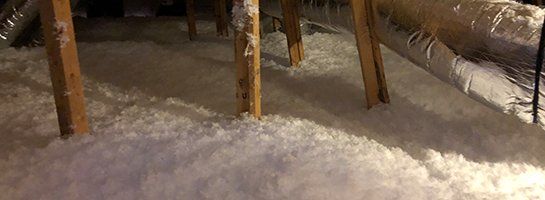Exceptional quality you can trust
Serving East Texas
Types of Insulation
Types of Insulation
Family Owned | Over 30 Years of Experience | Satisfaction Guaranteed
Family OwnedOver 30 Years of ExperienceSatisfaction Guaranteed
Your Local Insulation Experts
When choosing insulation products for construction projects, it's important to know that there's no such thing as a "superior" insulator. According to the Building Sciences Corporation, all types of insulation have equal performance when properly installed and air sealed.
Still, there are several factors you should take into consideration when choosing the right insulation for your building. Look to Rankin Insulation for the professional guidance and installation services you need. Backed by more than 30 years of industry experience, we are your dedicated insulation experts.
Read through the information below for details about different types of insulation. Don't hesitate to contact us
for additional information or to discuss your next project. We respond to all inquiries the same business day, and FREE estimates are available. Se habla Español.

Learn Some Details About Insulation and Its Properties
Thermal Performance
Insulation is all about maximizing your R-value per dollar. While all insulators are equal with proper insulation and air sealing, you want to maximize your R-value per dollar you spend.
Many products claim to be "superior" insulators because they achieve higher R-values-per-inch of insulation. But, all products with the same R-value insulate equally well. You should aim to get the most R-value for your budget with your chosen insulation material.
Aim for Minimal Air Filtration
According to the National Association of Home Builders Research Center and other independent tests, the pairing of fiberglass insulation and mineral wool insulation with standard air sealing practices reduce air infiltration levels to virtually zero.
Consider the Setting of Your Product
Fiberglass and mineral wool batts don't settle. Loose-fill fiberglass and mineral wool only settle a negligible amount, which allows them to maintain thermal performance for the entire life of the building.
Research UV Stability
Fiberglass and mineral wool insulations are UV stable. They do not experience shrinkage or thermal performance loss with exposure to ultraviolet rays. Spray foam insulation is susceptible to UV exposure, which can potentially compromise its performance.
Sound Insulation for Acoustic Control
Insulation can help create acoustically sound environments. Whether your building is designed for people to live, work, relax, play, celebrate, or turn up the volume in, insulation can make their entire experience more comfortable, enjoyable, and productive.
Fiberglass and mineral wool insulations give your building an edge by offering high levels of sound control between interior rooms, ceilings and floors, and from outside sources. These types of insulation also make it easy to apply acoustical control to interior walls without altering your build practices.
Sound Transmission Class (STC) Ratings
- Fiberglass and mineral wool insulations achieve a STC rating of 438, as part of a complete exterior 2x4 wood-framed wall system
- Spray foam insulation achieves an STC of 37-39.8
Noise Reduction Coefficient (NRC) Ratings
- Fiberglass and mineral wool insulations achieve an NRC rating of up to 1.0010 (higher is better with NRC ratings)
- Spray foam and cellulose insulations achieve an NRC rating of .75
Fire Protection
Fiberglass and mineral wool insulations are naturally non-combustible. Spray foam insulation ignites at 700 degrees Fahrenheit.
Manufacturers of cellulose insulation must apply fire retardants to reduce flammability at a ratio of 20% by weight. This adds fire resistance, but the finished product is still not non-combustible or smolder-resistant. The Consumer Products Safety Commission requires these manufacturers to warn customers that their product can pose a fire hazard.
Health Impacts
The International Agency for Research on Cancer (IARC), the US National Toxicity Program (NTP), and the California Office of Environmental Health Hazard and Assessment agree that fiberglass and mineral wool thermal and acoustic insulations are not to be classified as carcinogens.
Spray foam insulation contains isocyanates, which can cause skin, eye, and lung irritation, as well as asthma and sensitization. There is no recognized safe level of exposure to isocyanates for sensitized individuals.
Isocyanates have been reported to be the leading attributable chemical cause of work-related asthma. Physical contact and respiratory exposure both can trigger adverse health responses. During installation, all other tradespeople must evacuate the structure completely.
Moisture and Mold
Fiberglass and mineral wool insulations:
- Do not require drying or curing time during installation
- Do not introduce moisture into their installation cavities
- Absorb less than 1% of their weights in moisture. Cellulose insulation absorbs 520% of its weight in moisture
- Are available unfaced and inorganic, which means that mold is unable to feed on them
- Are available in batts with specialty facings and advanced smart vapor retarders, which help allow moisture to escape their installation cavity
Call
972-207-6320
for a FREE estimate!
972-207-6320
Quick Links
Our Service Area
Serving East Texas
Contact Us
Rankin Insulation
3111 Vz County Road 2301
Canton, TX 75103
972-207-6320
Canton, TX 75103
Privacy Policy
| Do Not Share My Information
| Conditions of Use
| Notice and Take Down Policy
| Website Accessibility Policy
© 2024
The content on this website is owned by us and our licensors. Do not copy any content (including images) without our consent.
